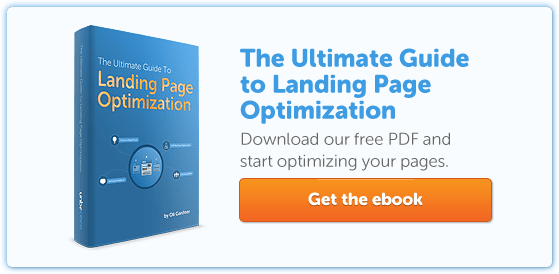
Do you know how your competitors are bidding more efficiently than you in AdWords to drive more conversions and higher ROI?
Sure, they may have access to sophisticated and expensive PPC management tools, but that’s not enough on its own. Marketers who get great ROI from their PPC campaigns understand how to take advantage of the tools at their disposal – no matter how basic.
So where should you start? There are plenty of posts about the different bidding tactics you should be using, but let’s focus on small changes that bring quick wins.
Here are three strategies that you can implement right away to bid more efficiently, drive more conversions and beat your competition.
1. Set bid adjustments for household income tiers
Bid adjustments allow for an increase or decrease in bid for better control of where ads are shown.
You’ve likely heard of marketers increasing bid adjustments for peak sales hours, or decreasing bid adjustments over the weekend. It’s also quite common to apply device-level bid adjustments.
But a less common strategy is to adjust bids based on household income tiers.
When is using bid adjustments for household income tiers effective?
I’ve talked before about the importance of pre-qualifying clicks for premium priced products, and it so happens that premium priced products are perfect for testing household income targeting.
There are certain products and services that are geared towards people with more money than the average Joe, and some geared towards those with less.
The examples below are hypotheses for when household income tier bid adjustments could make a difference:
- Luxury cars: Luxury auto dealers may see better performance for households in the upper income tiers.
- Pay-day loan and cash advance businesses: These types of companies may find lower income tiers to actually drive more conversions. A caveat could be that the lower tiers actually convert more loans but result in more defaults.
- Luxury homebuilders: The kind of house you can afford is generally related to your income.
- Mausoleums: It takes a pretty penny to build a mausoleum, so excluding lower income tiers likely makes sense.
Before you make any decisions about bid adjustments, you should first set a hypothesis and start collecting data. Aaron Levy of Cast Iron Digital explains:
If I had to give one piece of advice on the feature, it’s let the data populate before you make assumptions or adjustments. I’ve tested it across a few clients with mixed results, but in the cases where we changed bids off our perceived target audiences, performance backfired.
Simply put, don’t make assumptions without data, hoping to “make it rain!”

The goal is to collect data to see if it supports your hypothesis or not before blindly accepting and implementing any bid adjustments.
With data in hand you’ll be ready to make smarter bid adjustments at scale with little to no effort.
How to set household income tier targets:
Here’s how to get started (here’s a video tutorial if you’d prefer):
1. Select the campaign you want to add income tier targets to and go to Settings > Locations, and click the red “+Location” button as shown below.

2. Now find the “Location Groups” tab and the drop down to select either places of interest or demographic targets. Select “Locations by demographics” as shown below.

3. Now you will see the drop down for household income tiers. Select one and click “Add.” Repeat to add all the income tiers as targets. Now you can start collecting data for each of the household income tiers.

4. Check back in 1-2 weeks and see how your data looks. The data below is from the last 7 days on one of my accounts I recently added income tier targets to. I’m waiting on more data in this account but this gives you an idea of how you can look at performance by tier level. Now we hurry up and wait!
Just to re-emphasize, my suggestion here is to collect the data with a small bid multiplier before you jump to any conclusions. Once you have data to validate your assumptions, you can get to work setting bid adjustments.
2. Look year over year, not month over month
Many marketers look at last month’s performance to set bids for the upcoming month.
The problem with this approach is that you miss the forest for the trees. If you want to maximize profit with your bidding strategy you need to take a look at year over year data so you don’t miss seasonal trends, holidays, or special events.
E-commerce typically has very well-defined seasonal trends (Black Friday, Christmas) while other industries such as real estate or travel vary with the economy. No matter which industry you belong to, the point is to get out of the details long enough to understand what is coming. If you don’t see upcoming opportunities, you won’t adjust your bids up to take advantage of them.
Have a look at this slide from Bing Ads Evangelist John Gagnon’s presentation at the PPC Hero Conference. The slide shows the price of a single hotel room at Super 8 during the week of a major Nascar event:

Super 8 is considered a budget hotel (a room there isn’t normally $500), but based on the outcome of past Nascar events, the motel knew that many tourists would be flocking to Austin – and they raised prices accordingly.
This isn’t uncommon; when a major event drives up demand, hotels and airlines respond by adjusting pricing to maximize ROI.
The same is true with your bid adjustments: If you use data and event trends to determine when conversion rates or average order values will be significantly higher, then you can adjust your bids accordingly to bid more aggressively in that window.
Start looking forward today
- Look at your data from last year to determine whether there are any notable conversion spikes that can be linked to a specific event that takes place annually.
- Pay attention to demand drivers like upcoming events and holidays. You can increase bids, buy more volume, and boost overall profit by being proactive.
- If you want to start “looking forward” to the upcoming holiday season, here’s an article I published over at Search Engine Journal: 5 Bing PPC Optimization Tips for the Holidays.
3. Schedule automatic bid adjustments on your day off
It’s the weekend, and you deserve some time off. You can expect the competition is doing the same: letting their campaigns run on autopilot, occasionally checking in on them at best.

Most paid search managers check out on Friday and don’t think about their campaigns again until Monday morning. That leaves room for you to gain a competitive edge by scheduling some automatic bid adjustments for the weekend.
Similarly, if you notice that conversions are consistently higher on Mondays, you can schedule some bid adjustments for 6AM Monday morning. This way you don’t miss out on any opportunity Monday morning while you’re digging through emails, sitting in meetings and playing catch up in general.
How to set automatic bid adjustments for the weekend
Before you set any automatic bid adjustments for the weekend, you want to create a hypothesis and then collect data to validate your assumptions.
To do this, I like to check on my “Search Exact Match Impression Share” (or Search Exact Match IS) for each day of the week. According to Google, “Search Exact match IS” is defined as:
The impressions you’ve received divided by the estimated number of impressions you were eligible to receive on the Search Network for search terms that matched your keywords exactly (or were close variants of your keyword).
On any given day, if your “Search Exact match IS” is low and your CPA is healthy, then you should be buying up more impression volume on that day.
The easiest way to do that is to set an automated bid adjustment to increase your bids on that day. Here’s how I do it:
1. First, apply a “Time” > “Day of the Week” segment.

2. Compare the results for Saturday and Sunday versus the rest of the week. For simplicity’s sake, I like to start at the campaign level and then drill down to the ad group level next:
In this example, we see that our “Search Exact Match IS” is a bit lower on Saturday. The CPA looks good as well, so it’s worth testing whether or not increasing bids for Saturday would help drive more conversions.
In the example above we decided to test our hypothesis with a 20% bid multiplier on Saturdays. We ran that test for four weeks and found a 30% lift in Saturday conversion volume.
Please note that what I’m suggesting is that you should test this hypothesis.
Increasing bids could cause you to buy more conversions at the same CPA, but it could also just increase your CPA without bringing in more conversions. That’s the correlation vs. causation argument that you have to be careful with.
Making it all work
The ideas aren’t meant to be gospel – they’re meant to encourage critical thinking.
Have a look at your data, analyze it, and figure out where you could driving greater ROI.
Then create a hypothesis and test your assumptions.
Just because this kind of analysis requires extra effort upfront doesn’t mean it’s more time consuming; Once you test a hypothesis that works, you can automate it.
And that’s exactly the kind of PPC optimization that will help you outperform your competition and drive more conversions.
![]()



